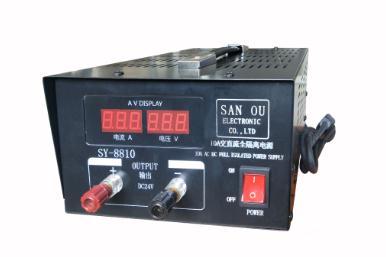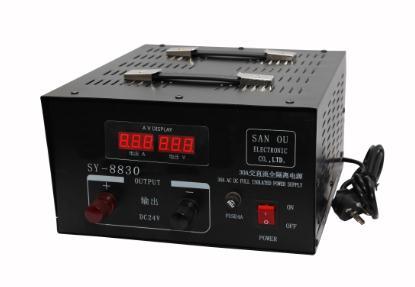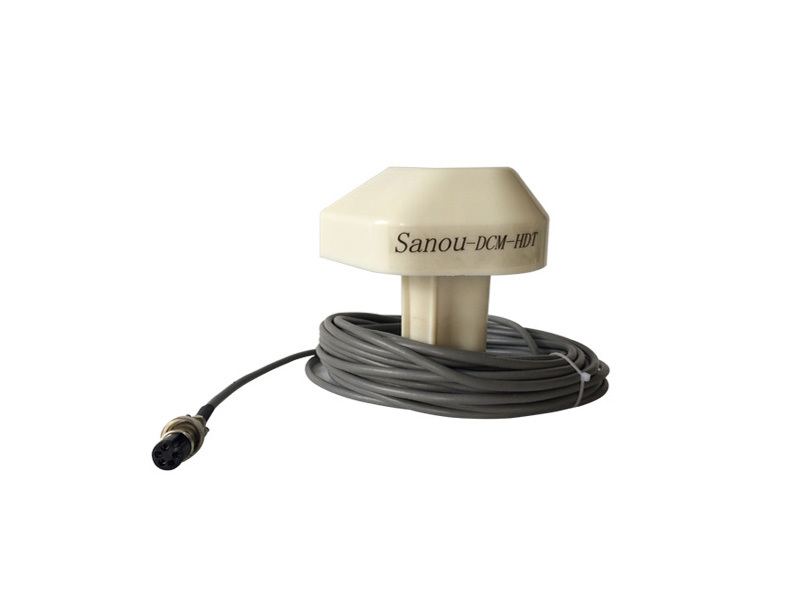News Center
The Science Behind Steering Gear Alarm Indicator Alerts: Understanding the Mechanisms and Importance of Safety in Marine Navigation
The Science Behind Steering Gear Alarm Indicator Alerts
In the vast expanse of the ocean, where safety and efficiency are paramount, the steering gear alarm indicator alerts play a critical role. These alerts are designed to inform the crew of potential issues with the steering gear system, which is essential for maintaining control over a vessel. Understanding the science and technology behind these alarm systems is crucial for anyone involved in maritime operations.
Table of Contents
- 1. Introduction to Steering Gear Systems
- 2. The Role of Alarm Indicator Alerts
- 3. How Steering Gear Alarm Systems Function
- 4. Types of Alarm Indicators in Marine Navigation
- 5. Importance of Regular Maintenance and Testing
- 6. Common Issues Triggering Alarm Alerts
- 7. Navigating Emergencies: Response Protocols
- 8. Future Trends in Steering Gear Technology
- 9. Frequently Asked Questions (FAQs)
- 10. Conclusion
1. Introduction to Steering Gear Systems
The steering gear system is an integral component of any marine vessel, responsible for the maneuverability and control of the ship. This system typically consists of mechanical and hydraulic components that translate the helm's movements into directional changes of the vessel. Given the complexities involved in marine navigation, the reliability of these systems is vital. A malfunction could lead to catastrophic outcomes, making alarm indicator alerts essential for operational safety.
2. The Role of Alarm Indicator Alerts
Alarm indicator alerts serve as the frontline defense against steering gear failures. These alerts are designed to notify the crew of any irregularities or potential failures in the steering gear system, allowing for timely intervention. By understanding the role of these alerts, crew members can take appropriate actions to resolve issues before they escalate, ensuring the vessel's safety and integrity.
2.1 Why Are Alarm Alerts Necessary?
Alarm alerts are necessary due to the unpredictable nature of maritime environments. Factors such as harsh weather conditions, equipment wear and tear, and human error can all contribute to steering gear malfunctions. These alerts provide the following benefits:
- Immediate notification of irregularities.
- Enhanced situational awareness for the crew.
- Prevention of accidents and navigation errors.
3. How Steering Gear Alarm Systems Function
Understanding how steering gear alarm systems function is central to appreciating their importance. These systems typically operate through a combination of sensors, control units, and alarm indicators. Each component plays a vital role in ensuring that any discrepancies in the steering gear are detected and reported promptly.
3.1 Sensors and Monitoring
At the heart of an alarm system are sensors that monitor the performance of the steering gear. These sensors track various parameters, such as:
- Hydraulic pressure levels
- Motor performance
- System temperature
Should any parameter fall outside of predetermined thresholds, the sensors trigger an alarm, alerting the crew to potential issues.
3.2 Control Units
The control unit processes the data received from the sensors. It functions as the brain of the alarm system, analyzing information to determine whether an alarm should be activated. This involves sophisticated algorithms that evaluate the data in real-time, ensuring that alerts are both timely and accurate.
3.3 Alarm Indicators
Once the control unit identifies an issue, it activates the alarm indicators. These indicators can take various forms, including visual signals (like flashing lights) and auditory alerts (such as alarms or beeps). The design of these indicators is crafted to ensure immediate awareness and prompt response from the crew.
4. Types of Alarm Indicators in Marine Navigation
There are various types of alarm indicators utilized in steering gear systems. Each serves a specific purpose and helps to categorize the nature of the alert:
4.1 Visual Indicators
Visual indicators are critical in conveying information quickly. Common forms include:
- Warning lights that change color based on the severity of the issue.
- Digital displays that provide real-time data on the steering gear’s performance.
4.2 Auditory Indicators
Auditory signals complement visual indicators by providing an additional layer of alert. These include:
- Buzzers or alarms that sound when a fault is detected.
- Voice alerts that provide specific information on the nature of the problem.
4.3 Combination Indicators
Some systems utilize a combination of visual and auditory alerts, offering a more robust warning system. This redundancy ensures that the crew receives alerts even in noisy environments or poor visibility conditions.
5. Importance of Regular Maintenance and Testing
Regular maintenance and testing of steering gear alarm systems are essential for ensuring their reliability. Proper maintenance involves routine inspections, calibration of sensors, and testing of alarm indicators to confirm their functionality. By adhering to a proactive maintenance schedule, vessels can minimize the risk of unexpected failures and enhance safety during navigation.
5.1 Scheduled Maintenance
Scheduled maintenance should include checks on the following components:
- Sensors for accuracy and response time.
- Control units for software updates and functionality.
- Alarm indicators for visibility and sound quality.
5.2 Testing Procedures
Testing involves simulating faults in the steering gear system to ensure that the alarms activate appropriately. These tests should be documented and reviewed regularly to identify any patterns or recurring issues that may require attention.
6. Common Issues Triggering Alarm Alerts
Understanding the common issues that trigger alarm alerts can help crews prepare for and respond effectively to problems. Some prevalent issues include:
6.1 Hydraulic Failures
Hydraulic systems are crucial for the operation of steering gears. Any drop in hydraulic pressure can trigger an alarm, indicating a potential leak or failure in the system.
6.2 Motor Malfunctions
Problems with the steering gear motor, including overheating or electrical failures, can also activate alarms. Regular checks on motor performance can help mitigate these risks.
6.3 Sensor Failures
Faulty sensors may provide inaccurate information or fail to trigger alarms altogether. Maintaining sensor functionality is critical for reliable alert systems.
7. Navigating Emergencies: Response Protocols
When an alarm alert is triggered, the crew must respond swiftly and effectively. Establishing clear response protocols is essential for minimizing risks during emergencies.
7.1 Immediate Actions
Upon receiving an alarm alert, the crew should:
- Assess the situation by referencing system diagnostics.
- Communicate the issue to all relevant personnel.
- Initiate corrective actions based on predefined protocols.
7.2 Post-Incident Review
After resolving the issue, conducting a post-incident review is important. This review should evaluate how effectively the crew responded, what could be improved, and whether any changes to protocols are necessary.
8. Future Trends in Steering Gear Technology
The future of steering gear technology is promising, with advancements aimed at enhancing safety and efficiency. Emerging trends include:
8.1 Smart Sensors
Smart sensors are becoming increasingly prevalent, offering enhanced data analytics and real-time monitoring capabilities. These sensors can learn from historical data to predict failures before they occur.
8.2 Automated Alarm Systems
Automation in alarm systems is set to streamline responses, allowing for immediate corrective actions without human intervention. This technology will reduce the margin for error during emergencies.
8.3 Integrated Systems
Integration of steering gear alarm systems with broader ship management systems is on the rise. This integration will facilitate comprehensive monitoring and response capabilities, enhancing overall vessel safety.
9. Frequently Asked Questions (FAQs)
9.1 What is a steering gear alarm indicator alert?
A steering gear alarm indicator alert is a system designed to notify the crew of potential issues with the steering gear, enabling timely responses to prevent accidents.
9.2 How often should steering gear alarm systems be tested?
Steering gear alarm systems should be tested regularly, ideally as part of a scheduled maintenance plan, to ensure their functionality and reliability.
9.3 What are common causes of steering gear alarm alerts?
Common causes include hydraulic failures, motor malfunctions, and sensor issues that affect the performance of the steering gear system.
9.4 How can crews prepare for alarm alerts?
Crews can prepare by understanding the alarm systems, practicing response protocols, and conducting regular training and drills.
9.5 Are there advancements in steering gear technology?
Yes, advancements include smart sensors, automated alarm systems, and integrated systems that enhance safety and efficiency in marine navigation.
10. Conclusion
Steering gear alarm indicator alerts are vital components of maritime safety, providing crews with essential information to maintain control and navigate effectively. By understanding the science, technology, and importance of these alerts, maritime professionals can enhance operational safety and ensure that vessels are prepared for any challenges that may arise. Regular maintenance, effective response protocols, and staying informed about technological advancements in this field are crucial for safeguarding lives and property at sea. Through diligence and commitment to safety, we can navigate the seas confidently and responsibly.
Related News
Understanding the Benefits of a 1 in 4 Out Signal Distributor for Electronic Components
Understanding the Benefits of a 1 in 4 Out Signal Distributor for Electronic Components Table of Contents 1. Introduction to Signal Distribution 2. What is a 1 in 4 Out Signal Distributor? 3. Key Advantages of Using a 1 in 4 Out Signal Distributor 3.1 Enhanced Signal Integrity 3.2 Improved Signal Distribution Efficiency 3.3 Flexibility in System Desi
Understanding the 1 in 10 Out Signal Distributor: A Key Component in Optoelectronic Applications
A 1 in 10 out signal distributor is a specialized electronic device that takes a single input signal and replicates it across multiple output channels—in this case, ten outputs. This function is crucial in various applications, including telecommunications, broadcasting, and data transmission systems. The ability to distribute a single signal to multiple outputs ensures that information can reach
Unlocking the Benefits of the Furuno 1831 Radar with a Quality 24 Pin Square Plug
Unlocking the Benefits of the Furuno 1831 Radar with a Quality 24 Pin Square Plug Table of Contents 1. Introduction to Furuno 1831 Radar 2. Key Features of the Furuno 1831 Radar 3. Advantages of Using a Quality 24 Pin Square Plug 4. Installing the Furuno 1831 Radar with a 24 Pin Square Plug 5. Maintenance Tips for Optimal Performance 6. Troubleshooting Common




